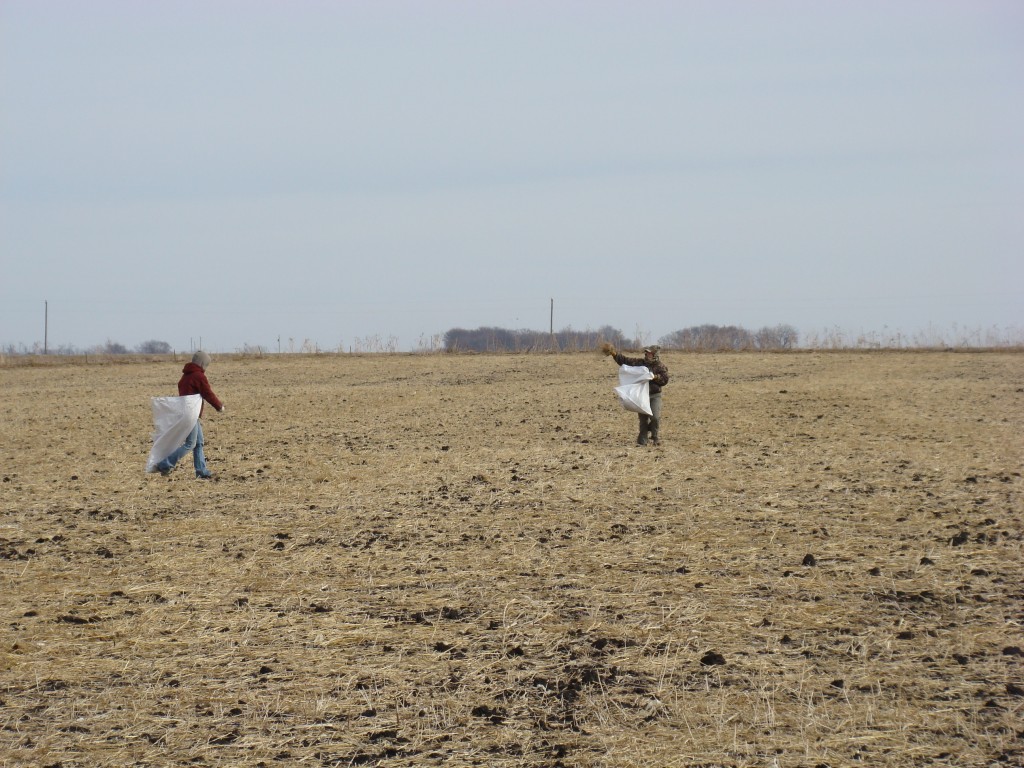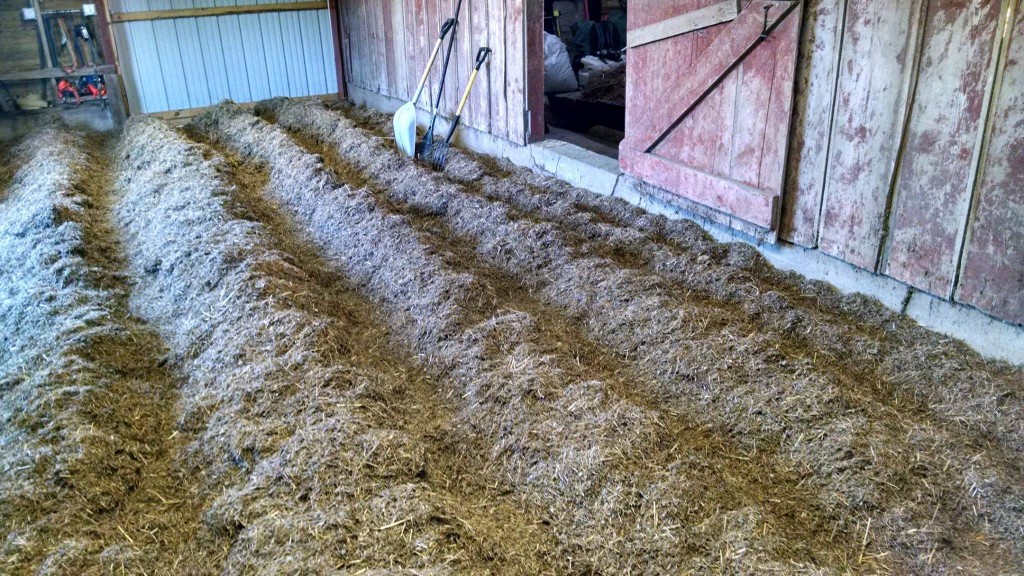Prairie planting: Drilling vs Broadcasting a prairie
By Rachel on December 18, 2015 in Blog
Planting or restoring prairie has become a common practice at Iowa Natural Heritage Foundation. Each year, INHF collects and purchases local ecotype prairie seed for restorative projects. You may have seen our video on how to make a healthy prairie a few weeks ago, but there are several different ways to plant a prairie. Two common techniques are broadcast seeding and drilling. INHF has used both techniques in the past.
Broadcast seeding
Using this method, the seeds are spread across the ground either by hand or by using a broadcast seeder mounted on an ATV or tractor.

INHF staff hand scattering seed
Broadcast seeding isn’t as simple as throwing out seed and hoping something grows. It’s very calculated and requires following a few steps. First, all seeds being used in the prairie seeding must be properly mixed to allow for even distribution across the planting area. Seeds may need to be mixed with a carrier, like sand or annual oats, to add necessary bulk to the mix. This ensures even spread and that you’ll have enough seed to cover an area. Several options are available to use as a carrier, but for INHF, natural debris left in the mix during seed harvest, like prairie stems and leaves, prove a great carrier. Additionally, care must be taken to ensure proper flow of seed out of the broadcast seeder and suitable speed is met, so as to allow the machine to cover the entire seeding area. Distributing the seed too fast or too slow can affect the efficiency of the entire process.
After seeding, the seed can be incorporated into the soil, depending on the planter's preference. Raking, dragging, harrowing or cultipacking can do this. INHF has seen successful results with or without a form of seed to soil incorporation.
Broadcast seeding has become the preferred method for INHF when trying to restore or reconstruct a prairie. INHF prefers to broadcast for three main reasons:
- We are able to plant a prairie in the dormant season (December to March) when the ground is frozen. This is commonly known as frost seeding. Frost seeding allows for natural seed stratification, allowing prairie species the proper conditions to germinate and sprout.
- INHF is able to plant seed that has not been thoroughly cleaned. Because the seeds are not being directly placed into the ground or run through a drill, they do not need to be cleaned of debris, stems, leaves, etc. “Dirty” seed does not flow well through a drill. Broadcast seeding, in this way, simplifies the process of prairie seeding.
- Lastly, when broadcasted, each seed gets a fair chance at survival because it’s spread on the surface of the ground. If seed is drilled too deep, some species will not be able to reach their sprouts the surface.
The Tallgrass Prairie Center Guide to Prairie Restoration in the Upper Midwest provides a more in depth look at broadcast seeding practice.
Drill seeding
Drilling can be done with the presence of existing sod or firmly packed dirt. Drill seeding involves a small grain or native grass drill that is designed to implant the tiny seeds into the ground at the proper depth. It’s a machine-dependent process, and care must be taken to properly calibrate or adjust the drill to ensure that seeds are placed at the correct depth. If seeds are placed too deep during drilling, the chances of plant survival decrease significantly.
Much like the methods used for broadcasting, the seed may also be mixed with a carrier.
As mentioned previously, only pure or clean seed can enter the drill, or else there is a risk of clogging the machine. Seed must go through a cleaning process to reduce the presence of debris, such as plant stems and leaves. Skilled operators who are familiar with the machine should handle seeding drills. Proper technique is vitally important when using a drill.

Prairie seed collected by land stewardship staff and INHF volunteers this fall
Things to remember
There are many considerations to keep in mind when using each of these methods. Each of these methods can produce quality results, but several factors influence the decision of which method to use, including personal preference or opinion, equipment availability or time of the year.
Also, please be aware that seeding method is not the only factor that determines the success of a prairie seeding. Many elements can affect a seeding, including the time of the seeding, soil moisture, soil type and seed viability—just to name a few examples.
We understand that this is a very technical process and there are many considerations to be aware of regarding this topic. If you have any questions or would like to dig deeper into the process of planting a prairie, please leave us a comment, or call Ryan Schmidt, INHF's Land Stewardship Specialist at (515) 288-1846 or email at rschmidt@inhf.org.
Good luck!
